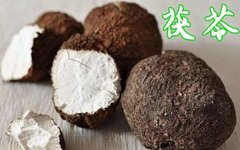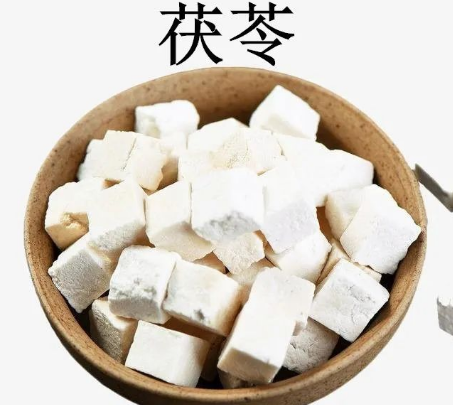
Name: Poria (Fú Línɡ)
Pinyin: Fú Línɡ
Alias: Poria cocos, Poria skin, Poria block, Red Poria, White Poria
Source: This product is the dried sclerotium of the fungus Poria cocos, belonging to the family Polyporaceae. It is harvested from July to September. After excavation, the soil is removed, and it is piled up to “sweat” before being spread out to dry until the surface is dry. This process is repeated until wrinkles appear and most of the internal moisture is lost, then it is dried in the shade, referred to as “Poria cocos”; or the fresh Poria is cut into different parts and dried in the shade, referred to as “Poria skin” and “Poria block” respectively.
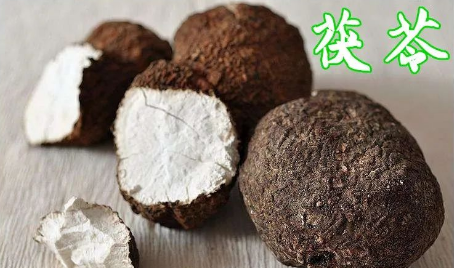
Form: The common form is its sclerotium, which is irregularly shaped, spherical, flat, elongated, or oval, varying in size from as small as a fist to a diameter of 20-30 cm or larger. The surface is light gray-brown or black-brown, with a lumpy, wrinkled appearance, while the interior is white with a slight pink hue, composed of countless mycelia. The fruiting body is umbrella-shaped, with a diameter of 0.5-2 mm, and the edge is slightly serrated; the sexual generation is rarely seen, honeycomb-like, usually growing on the outer skin of the sclerotium, initially white, gradually turning light brown, with pores that are polygonal, and the basidia are rod-shaped, with basidiospores that are oval to cylindrical, slightly curved, with one end pointed, smooth, and colorless. It has a distinctive odor.
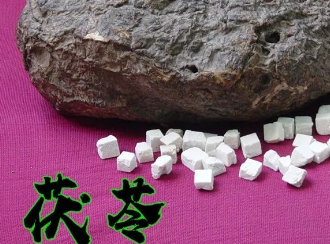
Distribution: It parasitizes the roots of pine trees such as red pine or masson pine, penetrating 20-30 cm underground. It is distributed in Hebei, Henan, Shandong, Anhui, Zhejiang, Fujian, Guangdong, Guangxi, Hunan, Hubei, Sichuan, Guizhou, Yunnan, Shanxi, and other regions. The main production areas are Anhui, Hubei, Henan, and Yunnan. Additionally, Guizhou, Sichuan, Guangxi, Fujian, Hunan, Zhejiang, and Hebei also produce it, with Yunnan producing the highest quality, while Anhui and Hubei have larger yields.
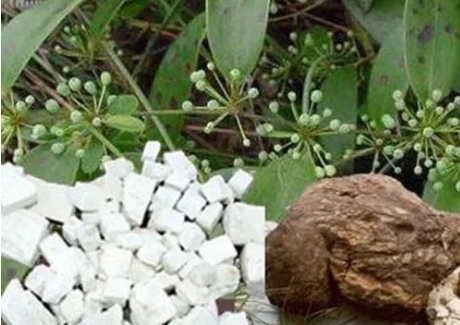
Characteristics: Poria cocos is spherical, flat, or irregularly shaped, varying in size and weight from several taels to over ten jin. The surface is black-brown or brown, with a thin and rough outer skin, and prominent wrinkled patterns, often covered with soil. It is heavy, hard, and difficult to break; the cross-section is uneven, granular or powdery, with the outer layer being light brown or light red, and the inner layer entirely white, with some being light brown, fine, and may show cracks or brown fibrous roots embedded in white fluffy fragments. It has no odor and is sticky when chewed. The best quality is characterized by a solid weight, a brownish outer skin with a slight sheen, deep wrinkles, a fine white cross-section, and strong stickiness. White Poria is cut into thin slices or cubes, white, fine, and powdery in texture. It is light and brittle, easily broken, and sometimes the edges appear yellow-brown.
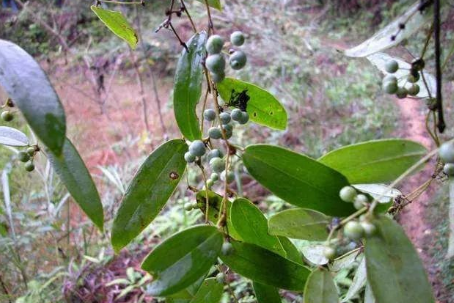
Preparation: For Poria: Soak in water, wash, remove, steam until thoroughly cooked, slice, and dry. For Red Poria: Take Poria blocks, spray with clean water, slightly moisten, sprinkle evenly with fine cinnabar powder, and mix repeatedly until the surface is coated with cinnabar powder, then dry. (For every 100 jin of Poria blocks, use 30 taels of cinnabar powder.)
Properties: Sweet and bland, neutral.
1. Shennong’s Herbal Classic: “Taste is sweet, neutral.”
2. Medical Origins: “The ‘Key to Treatment’ states it is warm in nature and bland in taste.”
Meridians Entered: Heart, Spleen, Lung.
1. Herbal Classics of Decoction: “Enters the Hand Taiyin, Foot Yangming, and Shaoyang meridians.”
2. Herbal Classics of the Mengqun: “Enters the Bladder, Kidney, and Lung.”
3. Leigong’s Explanation of Medicinal Properties: “Enters the Lung, Spleen, and Small Intestine meridians.”
4. Herbal Classics Explained: “Enters the Hand and Foot Shaoyin, Hand Taiyang, Foot Taiyin, and Yangming meridians.”
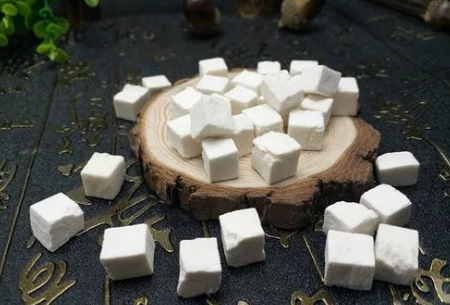
Functions: Promotes urination and leaches out dampness, benefits the Spleen and harmonizes the Stomach, calms the mind and settles the spirit. Used for difficult urination, edema, phlegm cough, nausea, diarrhea, nocturnal emissions, turbid urination, palpitations, and forgetfulness.
1. Shennong’s Herbal Classic: “Indicated for chest and flank Qi stagnation, anxiety, palpitations, pain below the heart, cold and heat fullness, cough, dry mouth, and thirst, and promotes urination.”
2. Supplementary Records: “Stops thirst, promotes sleep, abdominal distension, turbid urination, phlegm and water in the diaphragm, and edema. Opens the chest, regulates the Qi of the organs, expels Kidney evil, nourishes Yin, boosts Qi, and protects the spirit and center.”
3. Discussion on Medicinal Properties: “Opens the appetite, stops nausea, and is good for calming the mind. Indicated for lung atrophy and phlegm obstruction. Treats childhood convulsions, abdominal distension, and women’s heat-related turbid urination.”
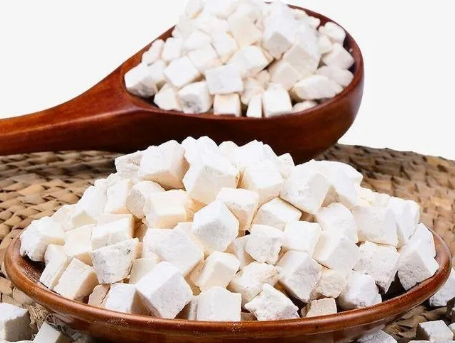
4. Rihua’s Herbal Classics: “Nourishes the five labors and seven injuries, calms the fetus, warms the lower back and knees, opens the mind, and benefits intelligence, stops forgetfulness.”
5. Discussion on Cold Damage: “Leaches dampness and relieves the Spleen.”
6. Medical Origins: “Removes dampness, benefits the blood between the waist and navel, harmonizes the center, and boosts Qi as the main function. Treats yellow or red urination that is difficult. The ‘Key to Treatment’ states it stops diarrhea, removes deficiency heat, opens the pores, and generates body fluids.”
7. Wang Haogu: “Drains the Bladder, benefits the Spleen and Stomach. Treats Kidney accumulation and phlegm.”
8. Medicinal Evidence: “Indicated for palpitations and muscle spasms, and also treats dizziness and irritability.” (Effects and Functions of Poria)
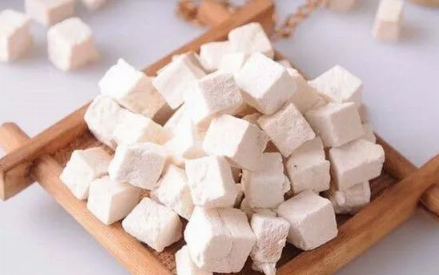
Precautions: Avoid use in cases of deficiency cold with slippery essence or Qi deficiency with sinking.
1. Herbal Classics with Annotations: “Mali is used as a guide. Avoid white astringents. Avoid Mu Meng, Dihuang, Xionghuang, Qinjiao, and turtle shell.”
2. Discussion on Medicinal Properties: “Avoid rice vinegar.”
3. Zhang Yuanshu: “If there is frequent urination or diarrhea, taking it will harm the eyes. If taken with excessive sweating, it will harm the original Qi.”
4. Herbal Classics Explained: “Patients with Kidney deficiency, frequent urination, or deficiency cold with slippery essence should not take it.”
5. Herbal Matching Classics: “Avoid use in cases of Qi deficiency with sinking, water depletion, and dry mouth.”
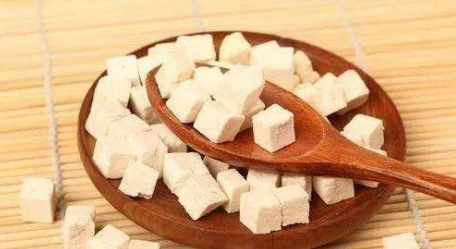
Additional Formulas: 1. For Taiyang disease, after sweating, with excessive sweating, dry stomach, restlessness, and difficulty urinating, with a floating pulse: 18 taels of Poria (peeled), 1.6 taels of Ze Xie, 18 taels of Bai Zhu, 18 taels of Poria, and 0.5 taels of Gui Zhi (peeled). Mix the five ingredients, grind into a powder, and take with white drink, 1 tablespoon three times a day. (From Discussion on Cold Damage – Wu Ling San)
2. For frequent urination, slippery and frequent: White Poria (peeled), 1.5 taels, and dried Shan Yao (peeled, soaked in alum water, and baked slowly). Mix the two ingredients in equal parts, grind into a fine powder, and take with thin rice drink. (From Rumen’s Family)
3. For edema: 2 qian of clean water, 3 qian of Poria, and 1.5 qian of Yu Li Ren (crushed). Add ginger juice and decoct. (From Essential Medical Knowledge – Poria Decoction)
4. For skin edema, swelling of the limbs, and water retention in the skin, with limbs that feel heavy: 3 taels of Fang Ji, 3 taels of Huang Qi, 3 taels of Gui Zhi, 6 taels of Poria, and 2 taels of Gan Cao. Mix the five ingredients, boil with 6 liters of water, and reduce to 2 liters, taking in three warm doses. (From Golden Chamber Essentials – Fang Ji Poria Decoction)
5. For phlegm and water in the heart, fullness in the chest and flanks, and dizziness: 4 taels of Poria, 3 taels each of Gui Zhi and Bai Zhu, and 2 taels of Gan Cao. Mix the four ingredients, boil with 6 liters of water, and reduce to 3 liters, taking in three warm doses, which will promote urination. (From Golden Chamber Essentials – Ling Gui Zhu Gan Decoction)
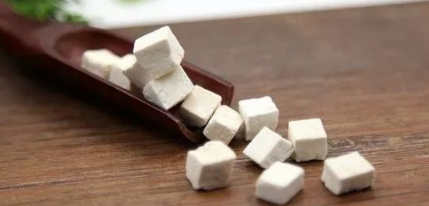
6. For sudden vomiting, fullness in the heart, water in the diaphragm, and dizziness: 1 sheng of Ban Xia, 0.5 jin of fresh ginger, and 3 taels of Poria (or 4 taels). Mix the three ingredients, boil with 7 liters of water until 1.5 liters remain, and take warm again. (From Golden Chamber Essentials – Xiao Ban Xia Jia Poria Decoction)
7. For persistent diarrhea: 2 taels of White Poria and 0.5 taels of Nan Mu Xiang (wrapped in paper and roasted). Mix the two ingredients into a fine powder, and take with Zisu and Papaya soup. (From Hundred and One Selected Formulas)
8. For damp diarrhea: 1 tael of Bai Zhu and 7.5 qian of Poria (peeled). Cut finely, decoct with 1 tael of water, and take before meals. (From Original Disease Formulas – Huo Ling Decoction)
9. For stomach reflux and thirst, desiring to drink water: 0.5 jin of Poria, 4 taels of Ze Xie, 2 taels of Gan Cao, 2 taels of Gui Zhi, 3 taels of Bai Zhu, and 4 taels of fresh ginger. Mix the six ingredients, boil with 10 liters of water until 3 liters remain, then add Ze Xie and boil again until 2.5 liters remain, taking 8 ounces warm, three times a day. (From Golden Chamber Essentials – Poria Ze Xie Decoction)
10. For men with deficiency of Yang Qi, weak essence, frequent leakage, turbid urination, frequent nocturnal emissions, and for women with prolonged cold in the blood sea, white discharge, and constant dampness in the lower body, with turbid urination like rice wash, or infertility: 4 taels of yellow wax, and 4 taels of White Poria (peeled, cut into blocks, boiled with 1 fen of Poria for over twenty boils, then dried, without Poria). Grind the Poria into powder, melt the yellow wax into balls the size of a bullet. Chew slowly on an empty stomach, swallow gradually, and take until urination is clear. (From Jufang – Weixi Pills)
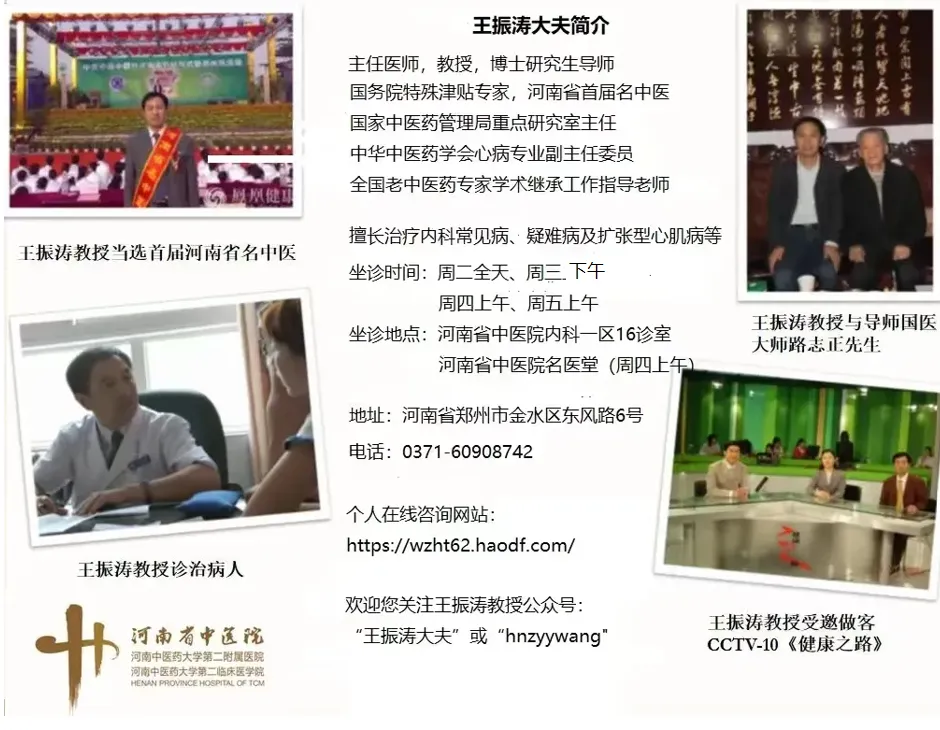
The above content is extracted from the internet, with gratitude to the original author!


